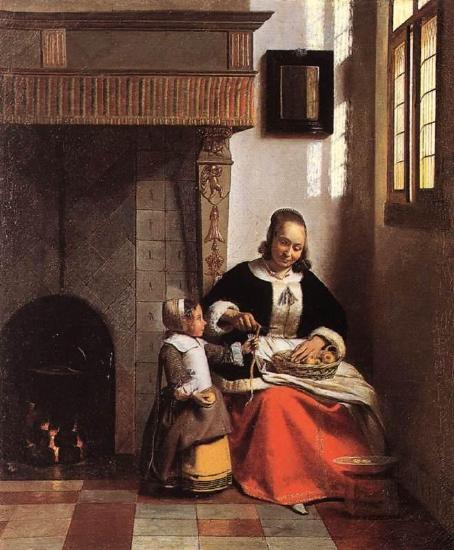9.2: Northern European Baroque (1580s– early 1700)
- Page ID
- 31885
Contrasting the artists in Catholic countries, the Baroque artists in Protestant areas painted in the realism manner, artists, created still life and nature-related paintings. A greater realism or naturalistic composition evolved, leading to a new form of classicalism adopted from ancient Greek and Roman art. For the first time, artists were not limited to the mercy of the churches, and many of the prosperous middle class were buying art to hang in their own homes. This created a demand for an abundant amount of high-quality art.
Pieter Breughel (1525-1569) was a Netherlands painter known for his landscapes and peasant panoramas. Hunters in the Snow (Winter) (9.1) is one of Breughel's most famous paintings. The winter scene would have been typical in the Netherlands and presented the viewer with a deep landscape, including a large foreground, no middle ground, and an even bigger background. The hunter figures in the front are on their way home with dinner, trudging through the snow. The background of the painting depicts people consumed by their daily labor and hardship in winter months. Breughel completed many genre paintings of life about ordinary people in the Netherlands.
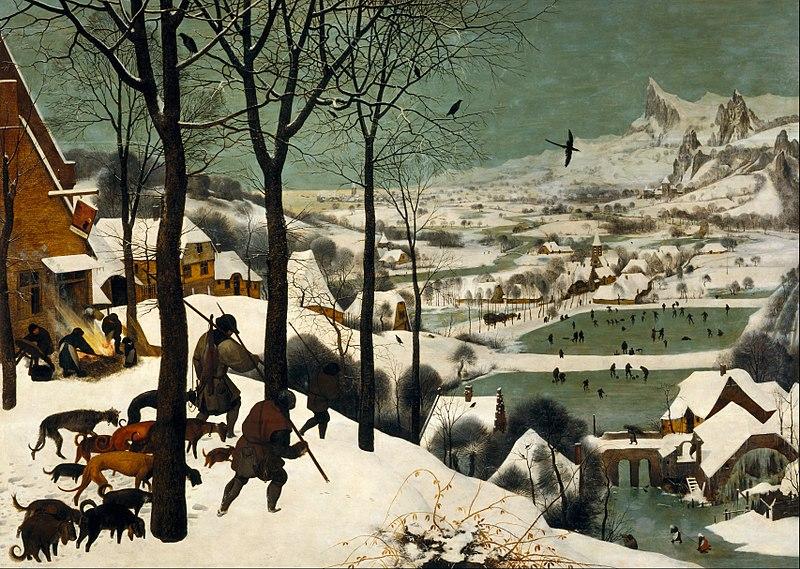
Rembrandt van Rijn (1606-1669), a famous Netherlands painter, used light and dark illusions to make his paintings come to life. Rembrandt only painted one seascape, The Storm on the Sea of Galilee (9.2), an earlier work from 1633. The scene pitches human frailty against the wrath of the sudden storm out at sea as the crew fights for control of the ship, a wave pounding the side of the stern, causing those on deck to hang to cling to any available device. The pictorial drama captures our attention, willing the ship to stay upright. The illusion of depth is created by the extreme lighting in juxtaposition to dark on the other side. In The Abduction of Europa (9.3), Rembrandt used the textures of the opulent clothing and the muted sky in opposition to the dark foreboding trees creating contrast and building drama, leaving the viewer to wonder what happens next.
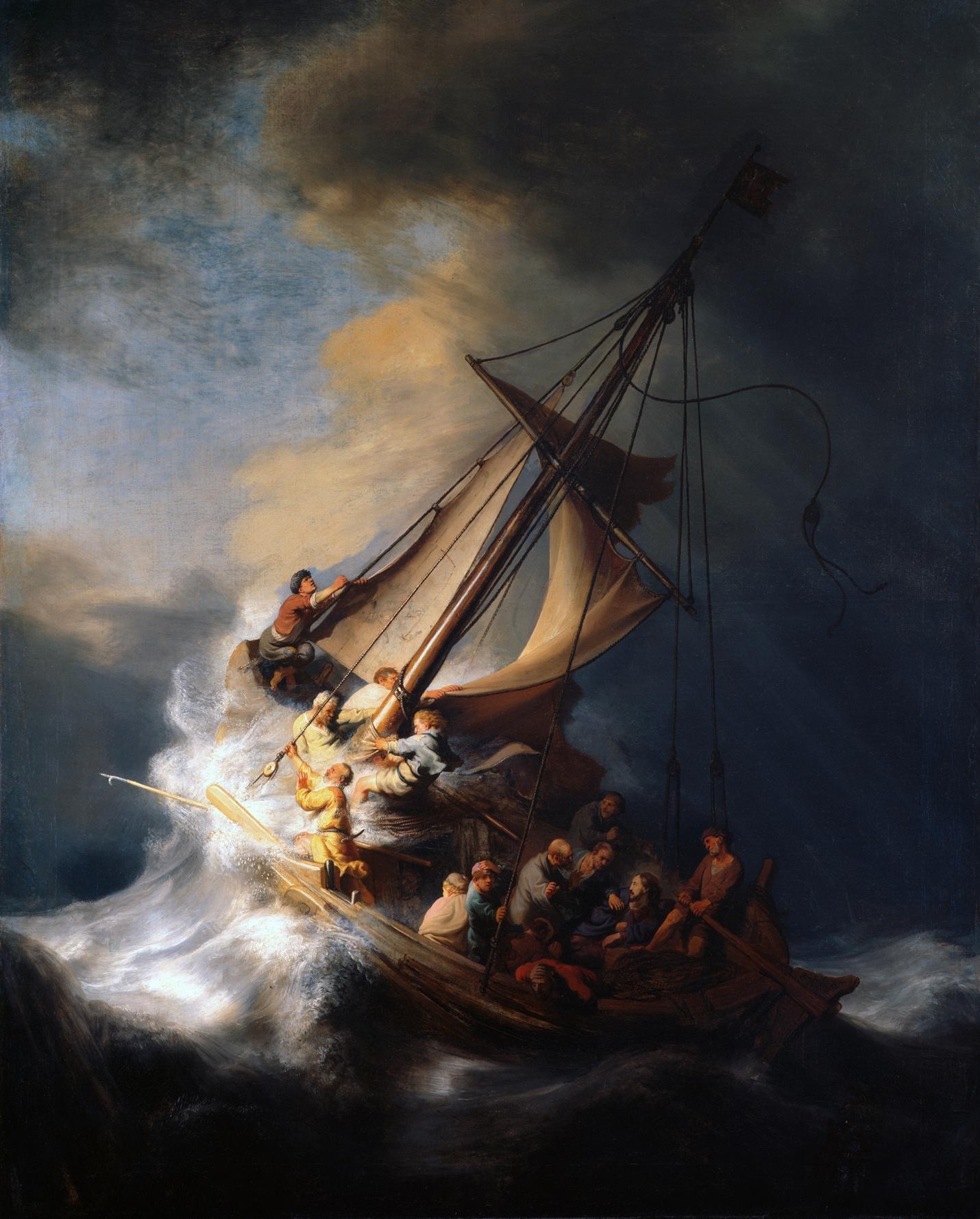
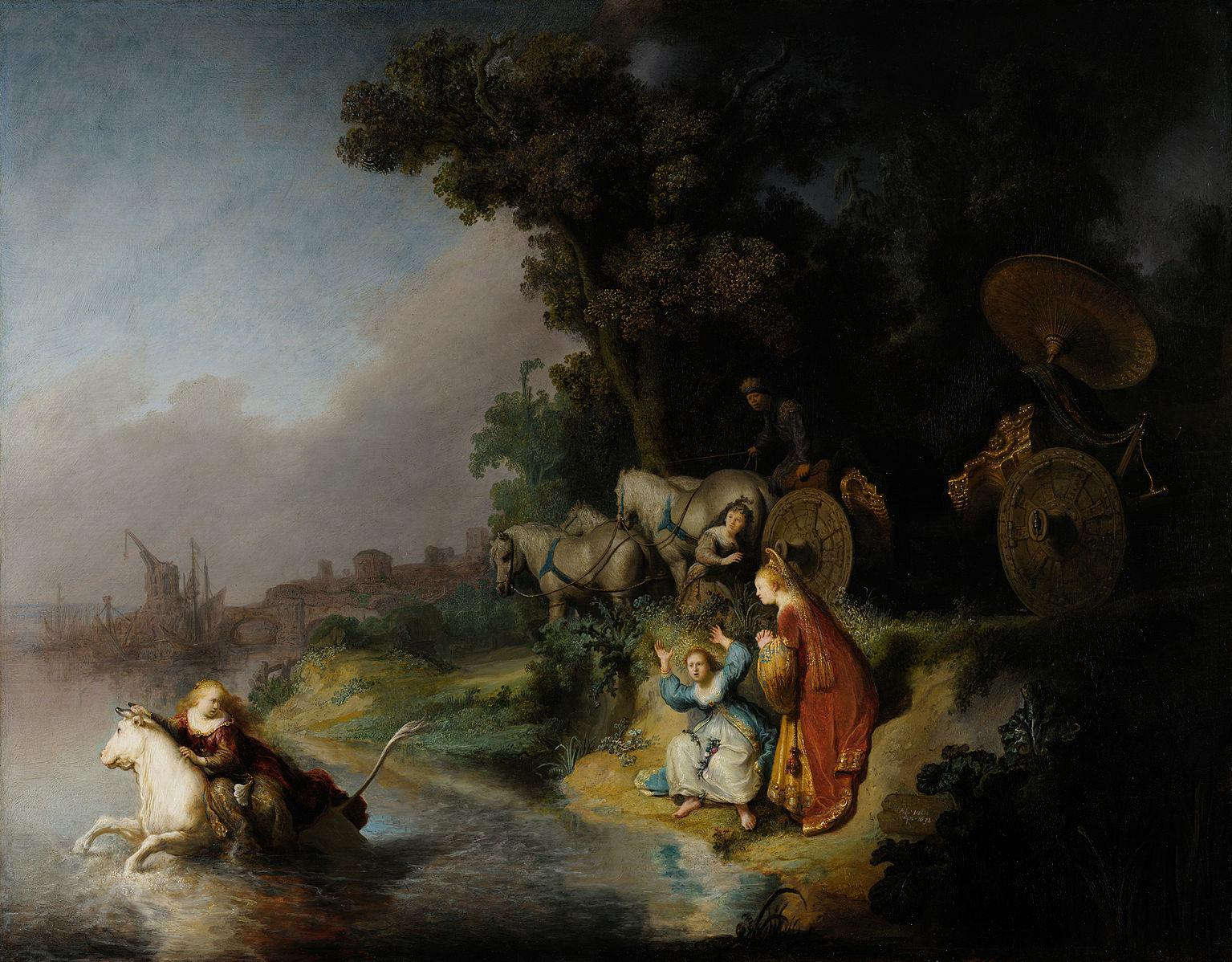
The Girl in a Picture Frame (9.4) is one of Rembrandt's portraits depicting a young girl in a dark red dress. Masterfully painted, her resting hands on the frame give an illusion of a girl projecting out past the picture frame. The elegant brushstrokes on the red dress and soft beret present a photographic quality to the appearance. Johannes Vermeer (1632-1675) was also a Dutch artist who created some of the most well-known paintings during the Baroque period. Vermeer painted scenes from everyday life with a sense of timelessness dignity and serenity, considered by many to be a master of light. The Girl with the Pearl Earring (9.5), whom many call the Mona Lisa of the north, is the best example of a portrait demonstrating chiaroscuro (using dark and light colors to highlight a figure).
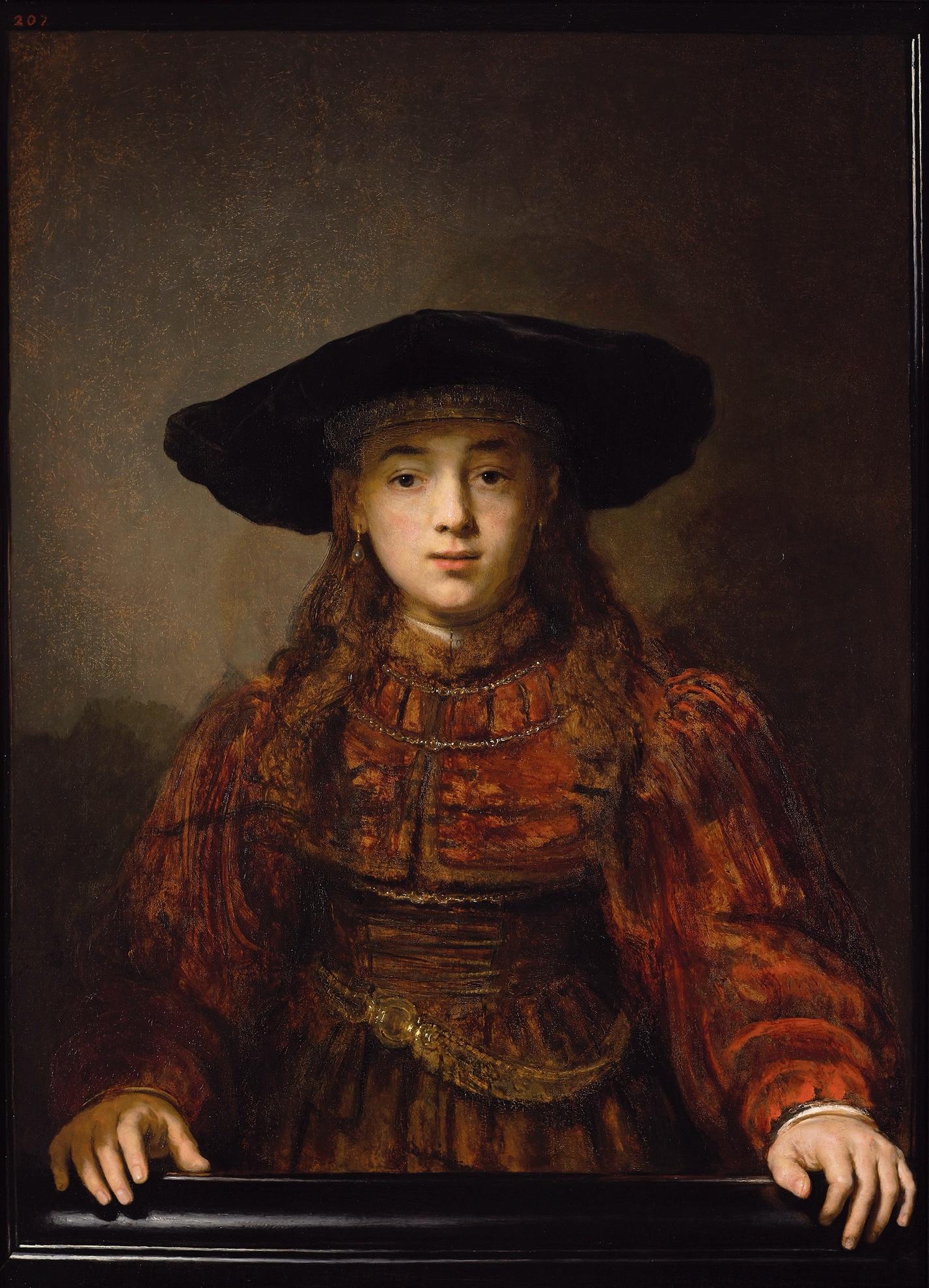

When comparing the two portraits, the faces are noticeably different. Rembrandt painted the face under the shadow of a large beret, hiding facial features, while Vermeer's portrait positions the face of the girl in the forefront of the light. The side of her cheek and ear cast a small shadow; however, the pearl earring is highlighted to stand out. Vermeer was a master at light and shadow, and his use of the black background illuminates the entire girl, bringing her forward from the background. Rembrandt's background is mottled with subdued medium and dark colors creating the black beret and red dress as a focal point.
Pieter Hooch (1629-1684) was a Dutch painter from the Delft School who painted flawless small works in compositional style of everyday life, incorporating remarkable outdoor lighting. The Woman Peeling Apples (9.6) is an example of a simple activity the woman is performing, seated by a window, her source of light that Hooch incorporates onto the wall. The bright red skirt, the child, and the woman's lap provide a focal point of the painting surrounded by exquisite detail found on the fireplace and floor tiles. Despite the fire burning in the background, the woman and child are dressed in layers of clothing indicating the chill in the air.
